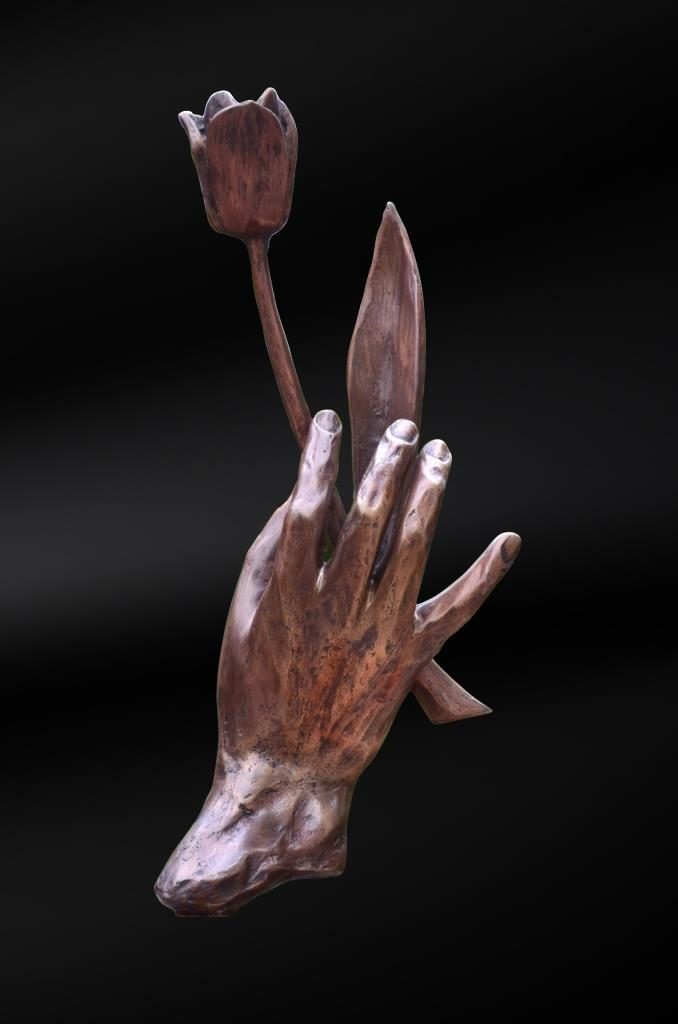
When I first saw photographs of the bronze and stone sculptures by the Israeli artist Benny Danieli, a silly Israeli song from the 80’s started playing in my head. The name of the song is “The Space Between A Man And His Shirt” and all Israelis my age and maybe even younger remember it, though the singer who performed it, Lilia, turned out to be a one hit wonder. The song is erotic and evokes the eroticism, the power, of empty spaces; the space between a man and his shirt, a man and a woman.
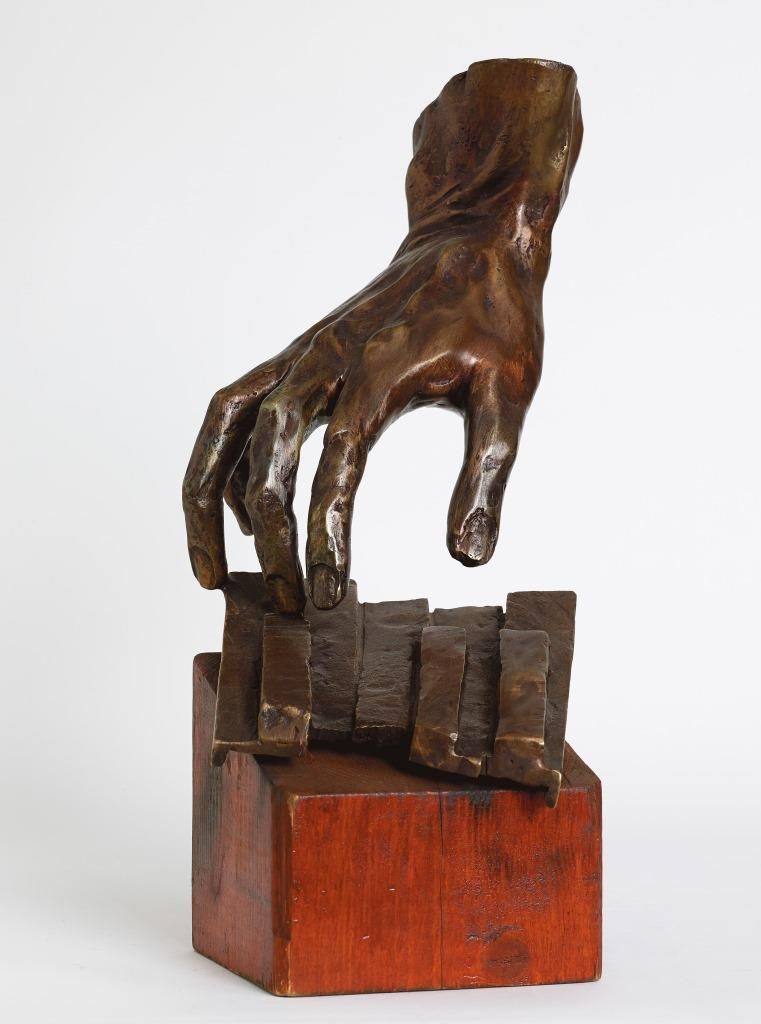
I couldn’t quite understand why Danieli’s art, which is serious and tackles hefty subjects like the Holocaust while drawing from Biblical motifs would remind me of a pop song until I realized that I was staring more at the empty spaces in and around the sculptures than at the sculptures themselves. The dense materials that the artist uses, bronze and stone and chunky wood bases are so impenetrable that the viewer’s eye wants to escape, to wander, to bypass those walls of closely packed atoms.

Copyright: James Tissot [Public domain]
Come to think of it, the Bible and the Holocaust, the two foundations upon which the modern state of Israel stands are also stories of empty spaces more than of dense substance, of absence rather than of presence. Other cultures, the Hindi and the Greek for example, are so rich with exquisite detail, with vibrant color, with descriptions of every minutia, that there is no time left for reflection, no space for contemplation. The Tanakh, the Jewish Bible, the Old Testament, is a study in pithiness. Nothing is said that does not add a crucial detail, nothing is embellished or even properly described. We know nothing of what Abraham wore or ate, we are left wondering what Jerusalem really looked like at its heyday under King Solomon. When details are given, it is only for ritual observance, but even then, it is the empty spaces that count, not the solid objects that define them. One feels that the most important part of the precisely described Ark of the Covenant, the only thing that really makes sense is the space between the wings of the Cherubim. And what is the Holy of Holies in the Temple, if not an empty space?
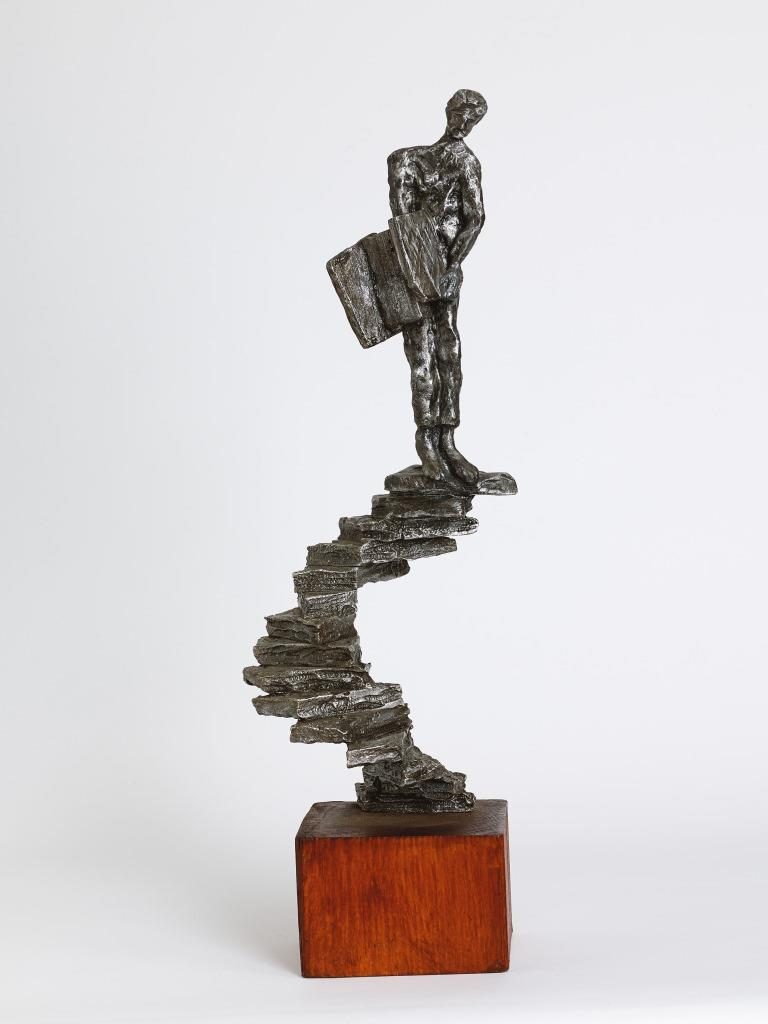
In the 75 years since the Holocaust, all of us are living with an empty space in our hearts, a space that can never be filled. Marble and bronze hands that come so close to touching and yet will never touch, the hapless guy who, climbing the staircase of his life, a very Jewish staircase seemingly made out of books, suddenly reaches an empty space, an end without rhyme or reason, these pieces give substance to what we all feel about so many millions of our people who departed this earth for no conceivable reason leaving such an impossible, improbable void in our own lives.
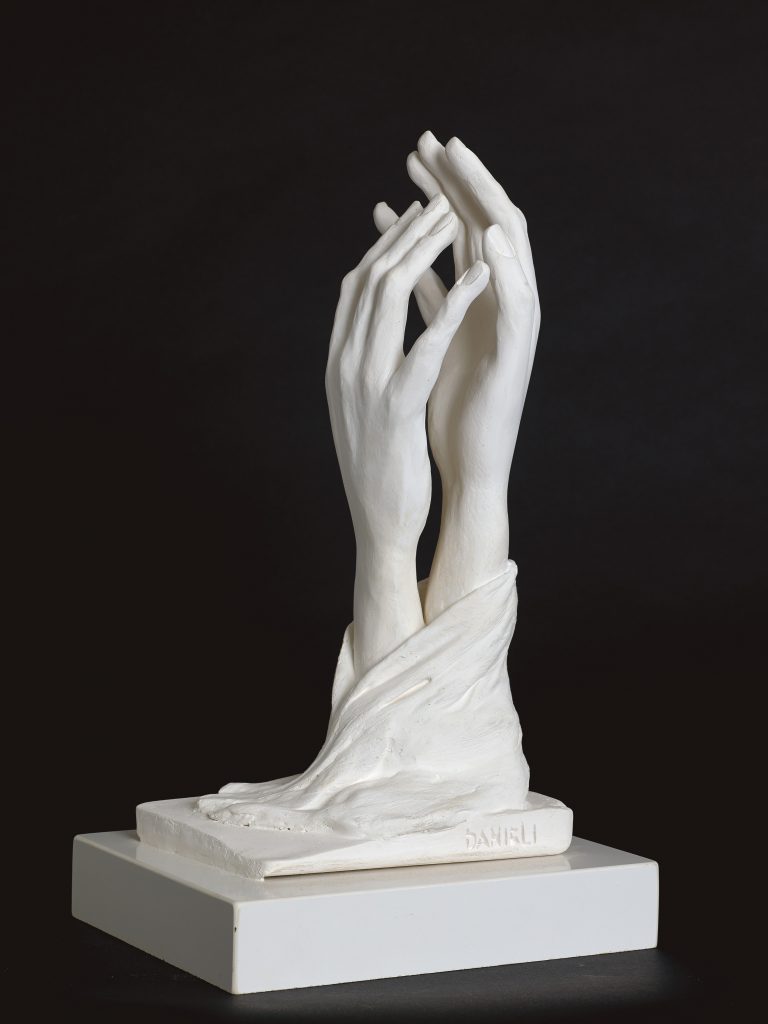
It is, to say the least, not easy to capture the intense irony, the quintessential struggle between fullness and emptiness of our Jewish journey, a journey that started when a guy who was hardly a warrior forced an angel to surrender to him his own name by clinging to him for dear life and culminates in that nanosecond worth of temporal void between the searing grief of the Day of Remembrance and the boundless joy of renewed Independence.
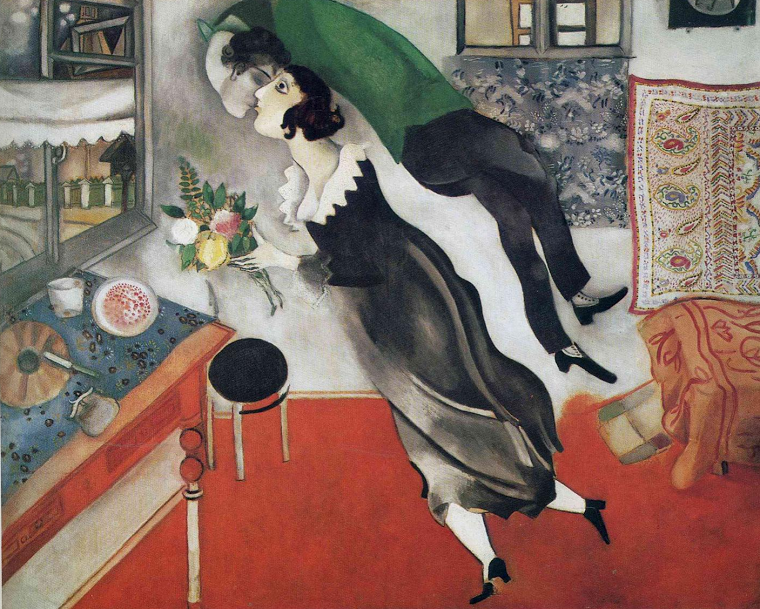
Copyright: Marc Chagall [Public domain]
In the representational arts, Marc Chagall came close with his understated drama told more by lack of detail than by detail itself, by voids rather than connections. In literature, Agnon and Bashevis Singer, with their razor sharp irony, the former in exquisite Hebrew, the latter in Yiddish, both in Jewish, capture some of what it means to be a Jew. The works of these artists is what real Judaica is all about, much more so than silver Menorahs and kiddush cups. Benny Danieli’s work, viewed through this lens, is cathartic: simultaneously startling and cleansing, which, as the Greeks have taught us, is the essence of artistic expression.

You can experience Danieli’s sculptures for yourself at his upcoming solo exhibition, curated by Noga Arad-Eylon, which opens on June 18th at the Jerusalem Theater on 20 Marcus Street at 19:30. The exhibition will run through July 20th.



3 comments
Baruch, you made my day and really happy for a nanosecond writing the article about me and my art. It is so deep blue and true…and Jewish too. I suspect that you know me better then I know myself! I am deeply moved and grateful l to YOU!
Thank you very much!
Dear blessed friend Baruch! Two days ago I dismantled my exhibition in Jerusalem Theater, but even today I read your article with great appreciation and learn from it. Your insight and ability to x-ray my soul and doing so, to formulate for me the essence of my own art, is just amazing. Before my soul together with symphonies of Brahms, Chopin and many others, accompanied my creative work, but today I have your manifest of being Hebrew and Jewish Artist. I will be more then happy to meet you in Jerusalem in my Studio, just let me know.